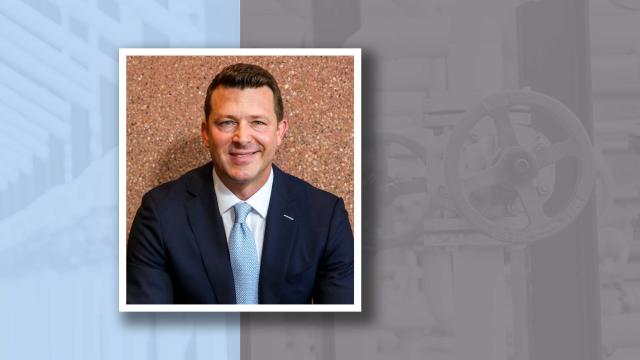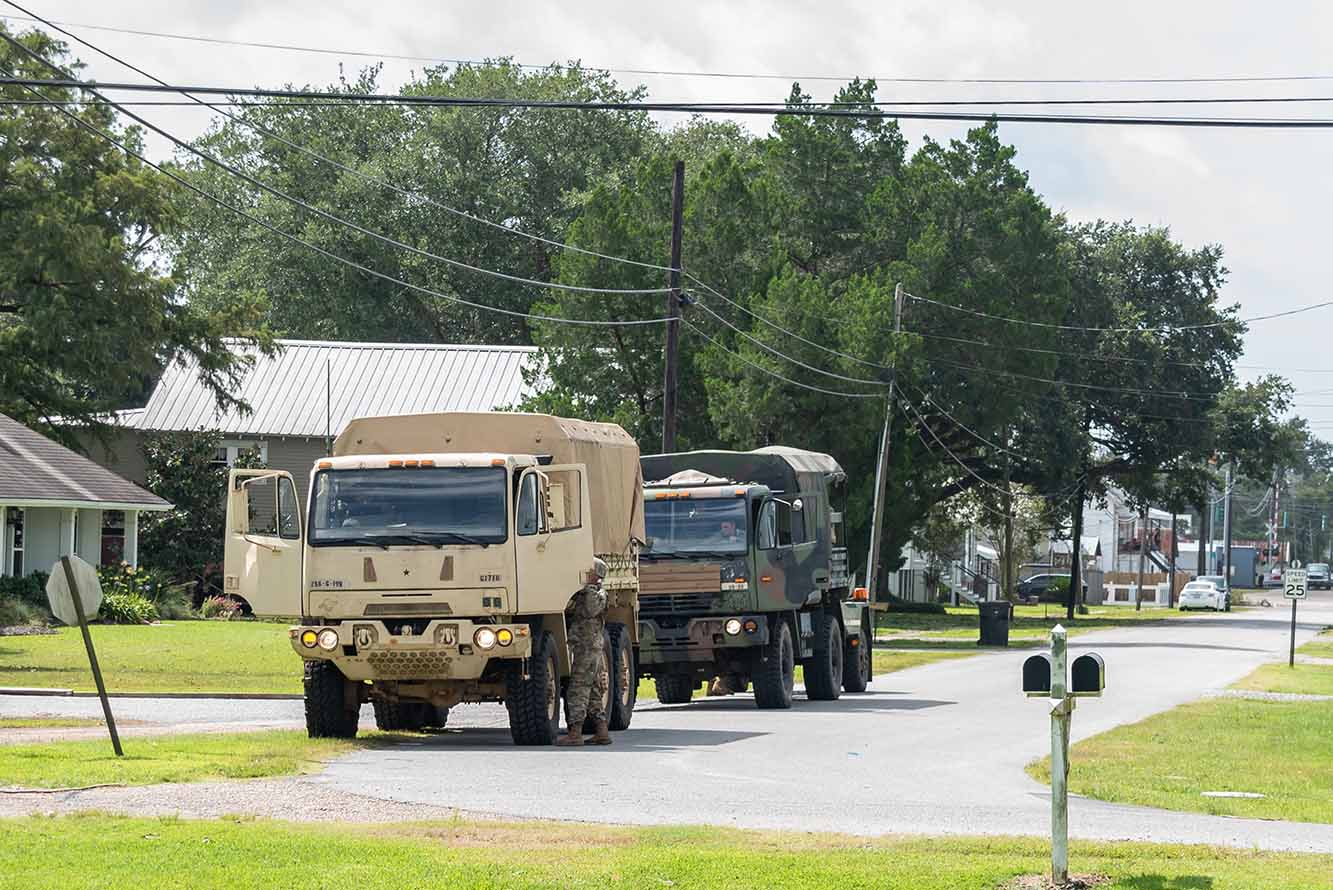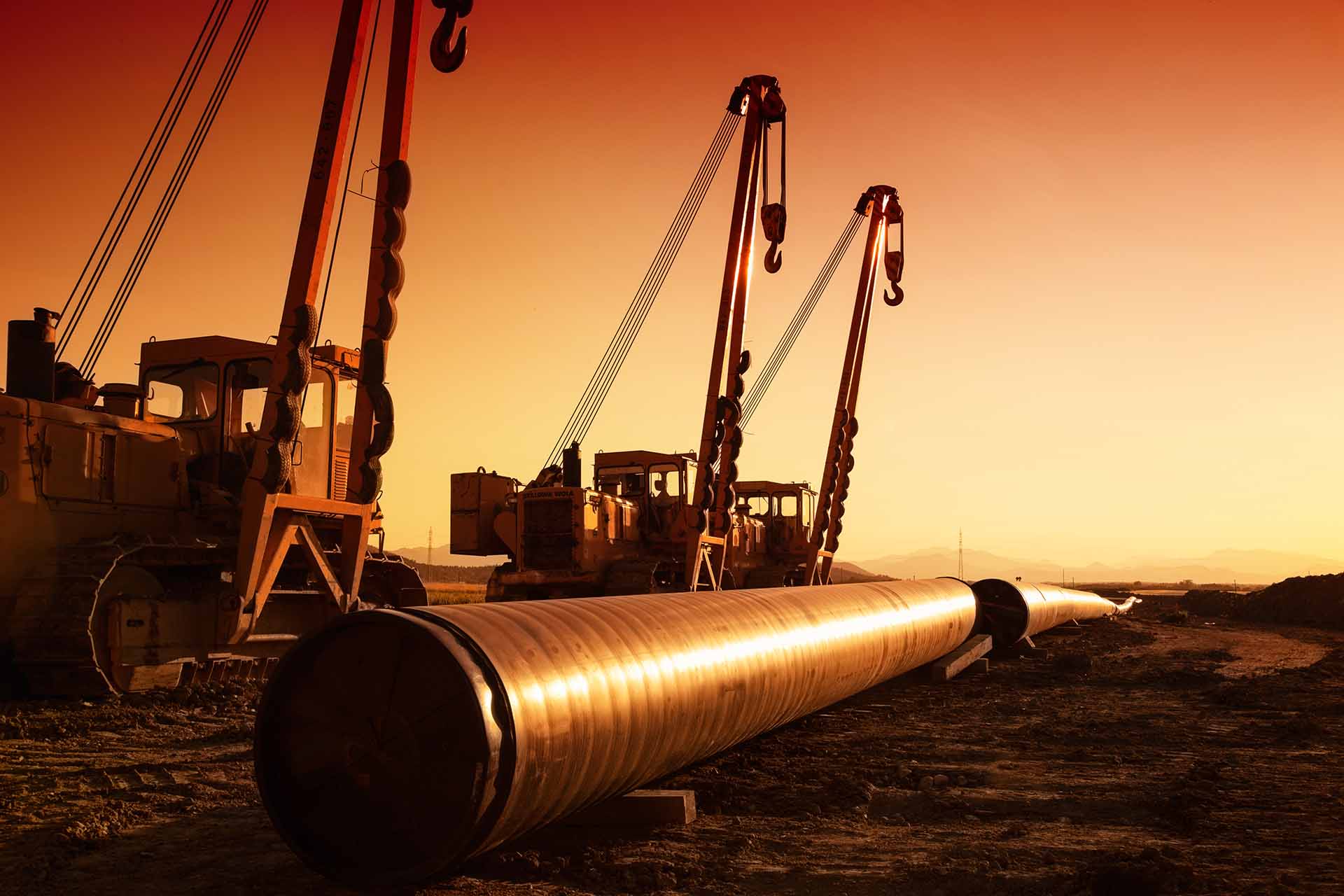
(Source: HartEnergy.com; East Daley Capital Advisors; noomcpk/Shutterstock.com)
How big of an energy geek is Ethan Bellamy, East Daley Capital Advisors’ new managing director for midstream strategy? He recently took a boat trip with his dad on the Savannah River and his favorite site on the tour was Kinder Morgan’s Elba Island LNG terminal. “Even on vacation, I can’t get it out of my system,” he said.
To be fair, he has something of a genetic predisposition toward the field. Bellamy’s grandfather was an electrical engineer who sold coal-fired boilers to Duke Power. His father worked at Bechtel on development of nuclear waste recycling. And as a middle school student on Hilton Head Island, S.C., he captured first place at the regional science fair by building a tidal wave power generator. Woe to his classmates who stayed up all night trying to coax faux lava out of their volcanoes.
In mid-August, Bellamy made time for a virtual chat with Hart Energy to discuss new challenges, both for himself and the oil and gas industry.
Hart Energy: You are working with the Energy Finance Twitter community and Pink Petro to raise funds to help those in the energy industry who have been impacted by Hurricane Laura. Tell us about that.

Ethan Bellamy: When we see the devastation of a storm like Laura, I think those of us in a position to help should do so. It’s amazing how quickly we collaborated online. Overnight we’d raised $10,000 and immediately financed supplies for Crowdsource Rescue, a non-profit that enables civilian search and rescue. The Energy Finance Twitter crowd can be cantankerous, but we dropped the acrimony and banded together to help victims in Lake Charles. I commend Katie Menhart of Pink Petro for stepping up with the largest donation. The hard work comes after the headlines, so I’d encourage anyone looking to make a difference to chip in if they can at Hurricane Laura Energy Industry Relief Fund.
Hart Energy: You’ve gone through some career introspection recently. Tell us about it.
Bellamy: The further you go in your career, the more specialized you become. You find yourself at these decision points where either you double down on what you already know and try to be even better at it, or you take a turn and try to go apply your skills elsewhere. The Venn diagram of my skill set has been really two things: the securities markets in institutional equities and midstream energy.
We’ve seen the active asset management business take a huge hit due to the influx of passive funds and relatively poor value add from active managers, albeit with some notable exceptions. We’ve seen some pressure on oil- and gas-dedicated energy capital because of ESG concerns, but mostly because of the resource oversupply and resulting pressure on hydrocarbon prices. I thought seriously about, hey, should I just go do something else in financial services? And while I was having that sort of existential thought, my prior firm, like many firms, just decided to get out of the energy business, which I view as kind of selling at the bottom. So, did I want to move on, or sell at the bottom myself?
Rob Wilson and Justin Carlson at East Daley really changed my mind. East Daley takes research in midstream to the level that, frankly, I didn’t really understand was possible. We model everything from the ground up, using pipeline receipt points, contract specifications, rig allocations by producer and every other available scrap of data to model a granular perspective on the midstream space.
I was so impressed by what they do here that I thought, OK, this answers the question for me. There’s a better mousetrap. I want to be with the people who are the world’s best experts, and their only problem is they need someone to evangelize their research. With experience in talking to clients and a big Rolodex, that seemed like a great fit for me. When you’re selling Ferraris at Toyota prices, that’s not a hard sell.
‘We’ve Overbuilt’
Hart Energy: Midstream is typically more stable than upstream. Will that status last in this downcycle?
Bellamy: You’re probably familiar with the Haynes and Boone statistics on bankruptcies. If you look at the metrics, you’ll see significantly fewer midstream bankruptcies in those statistics. Most of the Chapter 11 filings come from the upstream and oilfield services. That’s not to say there’s not fundamental risk, because there is; but it’s inherently a much less risky business. You’ve got contractual protections in place, and you’re on a mission-critical service provider.

An E&P can decide not to complete wells for a year, not to drill for a year, but they’re still going to flow their volumes on a midstream system, so the impact is a lot lower. Still, midstream impacts tend to lag spot price movements and activity. So, the fundamental impact of the downturn in March is still going to be felt for some time. We’ve got fairly significant oversupply and overbuilding of capacity in a lot of different markets. There are very few places where we have really strong supply constraints.
If you look at a map of oil and gas prices across the United States, you’ll see only a few places where we have a real price distortion. Those would be the Northeast, where you can’t build anything new right now. In Southern California, you’ve got problems in Aliso Canyon, natural gas storage, prohibitions against new infrastructure and renewables integration. But in general, we’ve overbuilt for the current amount of supply. That’s going to show up in rates and margins and recontracting, and it’s going to be a headwind for at least the next year or two on a lot of midstream businesses.
Hart Energy: Overbuilding is common during upcycles.
Bellamy: It always happens. As Kelcy Warren says, “We always overbuild.” If you’re a business planner in the middle of 2019, you didn’t see COVID coming; you didn’t see the complete gutting of the economic system by forced lockdowns. But it was very foreseeable that there was going to be some type of cyclical downturn from an exogenous factor, because this is energy and that’s what happens. You don’t know what or when, so, as a business manager, you always need a Plan B for whatever it is that’s going to cause that downturn. You don’t want to be leveraged to the hilt and not able to manage through that. You want to have contractual protections on your assets and, to differing degrees, a lot of these midstream companies, for better or worse, prepared for it. So, you can’t be complacent in times that are OK or really good. You’ve got to prepare for that downturn. You know it’s going to come. You’re not sure about why or when, but you have to be prepared for it.
Hart Energy: It seems that a lot of the challenges now facing midstream are the debt burdens carried by upstream partners. There must be a lot of pressure to renegotiate contracts.
Bellamy: The market has now, after the prior few downturns that we had, begun to realize that in most cases that risk is overstated. Meaning that we’re very good at bankruptcies, particularly for the E&P sector now. Debtor-in-possession financing and prepackaged bankruptcies move through the court system quickly. We’re very good at that process in the United States and, unfortunately, very good at it in the energy sector from experience. Those businesses must continue to use midstream providers to generate revenue, even when they’re broke. And so, the cases we’ve seen—bankruptcies and producers—yes, you’re going to see a much more limited drilling budget, but it’s not as if you have a receivable problem and all of a sudden, that cash flow turns off.
So that’s the first thing. The second thing is that even in worst case scenarios, for example, Ultra Petroleum and Tallgrass [Energy] really stand out, we saw the court come down on the side of Tallgrass and they were covered. And so, laws differ from state to state, but in general midstream is largely protected by business fundamentals and supply chain issues. For the vast majority of cases, midstream will continue to get paid. It may not be as lucrative or as much volume as they had hoped, but those cash flows aren’t going to go to zero.
‘Pressure to Consolidate’
Hart Energy: COVID-19 has wreaked havoc on the industry this year. Do you see structural changes coming as a result of this massive downturn?
Bellamy: Yeah, unfortunately for a lot of midstream employees, we are going to see continued headcount reductions as businesses go to operational efficiencies and cost management rather than growth. That likely got accelerated dramatically by COVID. Businesses simply have to rationalize their costs over a smaller revenue base and expectations for a smaller revenue base in 2021, as well.

The pressure to consolidate will be there. There are some reasons why we won’t see consolidation. Managers want to keep their seats. They’re holding out on option value for recovery. A lot of private equity-sponsored private midstream companies are underwater, and they’d rather just continue to keep the management fees than lock in a loss. I think we will see some consolidation. Probably not as much as we need, but we will see some.
There’s also the shift from partnerships to C corps that has been underway for some time that will enable C corporations at the margin to be part of more passive index funds to gather more investors from a broader investment base. The election has been a decision point for many midstream companies contemplating that, mainly because there’s a potential that corporate tax rates go up under a Democratic regime and if that were the case, the partnership model would be more advantaged than it has been since the Trump tax cuts. If the C corp tax rate goes back up, partnerships look like a better investment because the tax is lower. That’s come up with Enterprise [Products Partners], for example. Now, the other part of that is, will Kelcy Warren convert Energy Transfer? I doubt that. At some point, he’s got enough money and values control. I would be highly skeptical that Energy Transfer would convert to a C corporation. Magellan might be a better candidate. Pre-COVID, ONEOK earned a premium valuation in part because of its very accessible equity capital structure.
‘There is Political Risk’
Hart Energy: What is your take on the upcoming election? What is at stake for the industry?
Bellamy: There are some things that are patently obvious, such as Keystone XL [Pipeline]—anything that’s got a presidential permit is not getting built by a Democratic administration. Kamala Harris said she’s anti-fracking, so you can translate that into a whole host of scenarios and decisions that an administration might make. Now, whether they actually operationalize campaign talking points, who knows? Political expedience matters a lot more than promises. But if they wanted to use that as an issue, they certainly could and the federal government can get in the way of a lot of resource access and development, whether it’s access to federal lands, lease rates on federal lands, environmental permitting of projects, NEPA, etc. The executive branch can’t do that all on its own, but it has a big monkey wrench.

DAPL (Dakota Access Pipeline) would not have been built were it not for the election of Trump. They would have been 99.9% complete and running a fleet of trucks to connect the final mile over whatever road they could. Talk about brinksmanship, but that’s an example of something where the election really did matter. We’re at a fork in the road in terms of energy policy and resource access, and some of it may be counterintuitive because, to the extent that there’s less access to resources, that will increase prices. There will be significant winners and losers. Private leases in West Texas, under one scenario, do a lot better under a Democratic regime. But remember also, there are some federal level decisions like, for example, the ability to export U.S. oil that, were that reversed, would have a significant negative impact on U.S. hydrocarbon prices and development activity.
So, lots of potential decision points and you’ve got to pay attention. These things matter, and it’s not just the federal level; it’s the state level, too. If you look at New Mexico, there are some Blue Dog Democrats that are pro-oil and gas. As they die or retire they could be replaced by young progressives, and that could impact the Delaware Basin in terms of development activity. And the same thing goes in Colorado—used to be a red state, now a blue state. We have an oil and gas commission with a new mandate, but the risk doesn’t end there. There is political risk to the D-J (Denver-Julesburg) Basin. You have to have to pay attention to that.
Hart Energy: How about the Green New Deal? Is that mostly a threat to the oil and gas sector or are there opportunities that it offers?
Bellamy: Well, how much of an opportunity and how attractive is the state of the electrical supply in California to the rest of the nation? You’ve got one of the biggest economies in the world that has rolled out 30% of its power supply on renewables and is plagued by antiquated infrastructure that’s threatened by wildfires. Their inability to integrate renewables into the grid such that they’re having brownouts looks completely incompetent.
I would suggest to you that if California is the furthest down the road of the Green New Deal, then that is an example of exactly what you should not do in energy policy. Now that’s not to say we can’t have significant wind and solar. In a lot of places, those make sense. Arizona should be a leading solar power generator. Iowa should lead in wind. Those technologies make a lot of sense to a point, but once you start to cross the threshold integrating that intermittent power into the overall supply stack, you start to take on reliability concerns.
I think that until ubiquitous long-term electrical storage is cheaper, easier to implement and cost-effective, heading down the path of 80% or 100% renewables is a recipe for disaster and brownouts. A supergrid might also solve some problems, but that wouldn’t be cheap or easy either. And we seem to be moving down that path as if we have all these issues worked out when, in fact, we don’t. Consumers are being sold an ideological bill of goods that is inaccurate at best and malicious at worst.
Hart Energy: We have a polarized culture now in politics and you have said it would be better if energy weren’t a political issue. Why does it have to be, given that we all use oil and gas?
Bellamy: It’s an easy wedge issue. If you think about, what does it mean to be progressive and conservative? Philosophically, if you’re conservative, the way we’ve done things in the past is pretty good. If it ain’t broke, don’t fix it. Let’s not rush headlong into change because that creates instability. If it’s progressive, everything in the past can be improved and we should do it rapidly. Philosophically, there’s almost a natural explanation for why energy is a political issue. Then you layer on the natural disposition of the left to overstate the “climate crisis” and the right to downplay it. The answer is somewhere in the middle, but thoughtful compromise on managing the externalities of hydrocarbons doesn’t make headlines.
In my view, completely revamping our energy system would have a marginal impact on the global CO2 or GHG [greenhouse gas] balance, particularly if China’s building a coal plant every week. But that is a math- and physics-based argument. It does not tackle the emotion and secular religion, if you will, of climate change. Fact-based arguments don’t approach the conviction with which those positions are held. There’s a long history of environmental alarmism, best exemplified by the Club of Rome Malthusian view, that the end is near. That we’re doomed. No, we are definitely not doomed. The wealthier we become, the more flexible and sophisticated we will become in managing problems.
It’s easy to point to California on power prices and reliability. It’s easy to point to Germany on power prices and say, sure, we can integrate these new and different technologies, but it comes at a cost of a regressive tax and distributed economic friction. We may be reducing some of the externalities of hydrocarbons, but it comes at a cost. We just can’t go myopically into decisions and say we’re going to get Net Zero by 2050, which is a convenient time frame for a politician to commit to because most of them will be dead by that target date and not have to actually deliver on that campaign promise. I might even make that promise were I a politician. Balanced federal budget by 2040! Pick some target in 2040 or 2050. You get to escape actual consequences while still getting the benefit of your political point you’re trying to make in the present.
‘The Right Thing to Do’
Hart Energy: I think most would agree that the oil and gas industry has not done a good job of presenting itself to the public. What is your advice?
Bellamy: Companies need a chief risk officer. Their only job is to prevent spills, accidents and be the one to raise their hand and say, we might not want to do that or there is an extra layer of preparedness we can do to avoid a negative outcome, not because we want to avoid the negative precedent, but because it’s the right thing to do.
Great that we’re doing Twitter campaigns to talk about the positive attributes of natural gas and we’re good stewards, but the best thing you can do is not spill things, not hurt people, not create problems that have real consequences in the world. Instead of waiting for The New York Times to see that you have an emissions problem at your gas plant, maybe walk out there yourself with a FLIR (forward-looking infrared) camera and make sure that it’s not happening. So, spend a little more on HS&E and risk management so that you don’t have a problem down the road because you ran fast and loose. The best thing we can do is to be an absolute best, cleanest, safest version of the industry we can make, not sell platitudes on Twitter. You whipped up an ESG report to satisfy an investment consultant? OK, great. That’s the new table stakes, but I’d much rather see an elimination of another Firestone, Kalamazoo or Refugio.
Fundamentally, we have a principal-agent problem in corporate governance that we don’t seem to be tackling all that well. If you look back at the credit crisis, incentive structures rewarded short-term successes and the long-term consequences be damned. We have made some progress, but we need much better mechanisms to ensure that shareholders and assets are managed for more than a year-end bonus target.
Hart Energy: Final words of wisdom?
Bellamy: If you take the most aggressive estimates for changes in the U.S. power supply, including electric vehicle penetration and renewable targets, you’re still left with oil and gas being the dominant power supply for decades. We need to and we can do it faster, cleaner, more efficiently and more profitably. I’ve joined the No. 1 midstream business intelligence firm, East Daley, and I look forward to helping operators and investors allocate capital effectively for many years to come.
Recommended Reading
Thanks to New Technologies Group, CNX Records 16th Consecutive Quarter of FCF
2024-01-26 - Despite exiting Adams Fork Project, CNX Resources expects 2024 to yield even greater cash flow.
Cheniere Energy Declares Quarterly Cash Dividend, Distribution
2024-01-26 - Cheniere’s quarterly cash dividend is payable on Feb. 23 to shareholders of record by Feb. 6.
Marathon Petroleum Sets 2024 Capex at $1.25 Billion
2024-01-30 - Marathon Petroleum Corp. eyes standalone capex at $1.25 billion in 2024, down 10% compared to $1.4 billion in 2023 as it focuses on cost reduction and margin enhancement projects.
Humble Midstream II, Quantum Capital Form Partnership for Infrastructure Projects
2024-01-30 - Humble Midstream II Partners and Quantum Capital Group’s partnership will promote a focus on energy transition infrastructure.
Hess Corp. Boosts Bakken Output, Drilling Ahead of Chevron Merger
2024-01-31 - Hess Corp. increased its drilling activity and output from the Bakken play of North Dakota during the fourth quarter, the E&P reported in its latest earnings.






